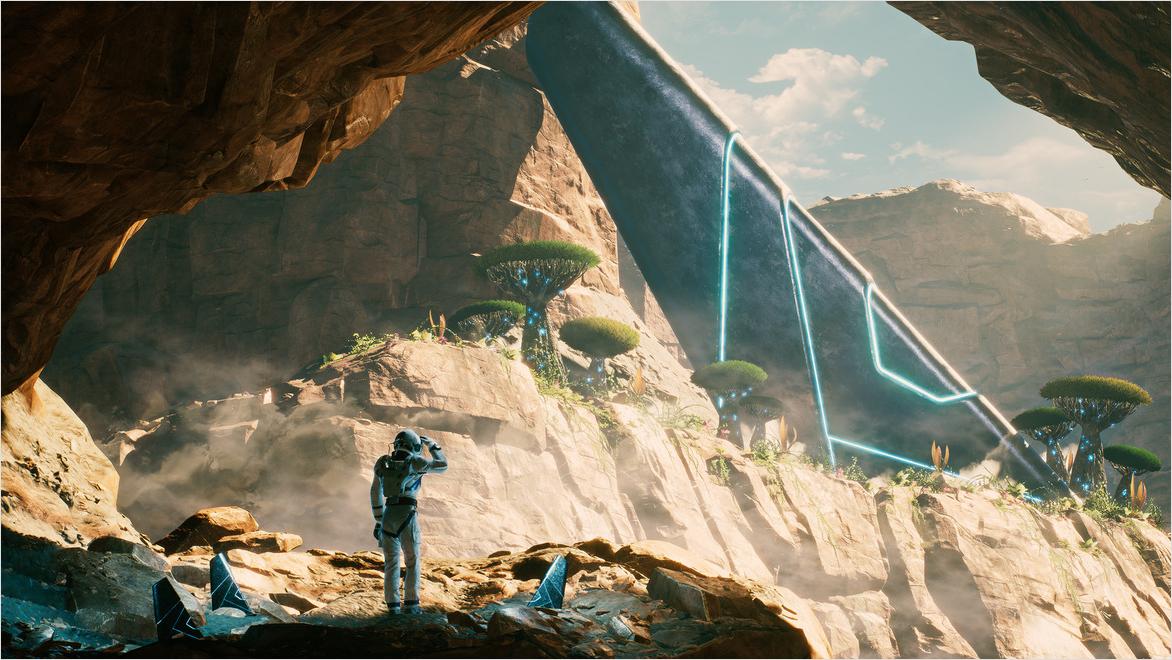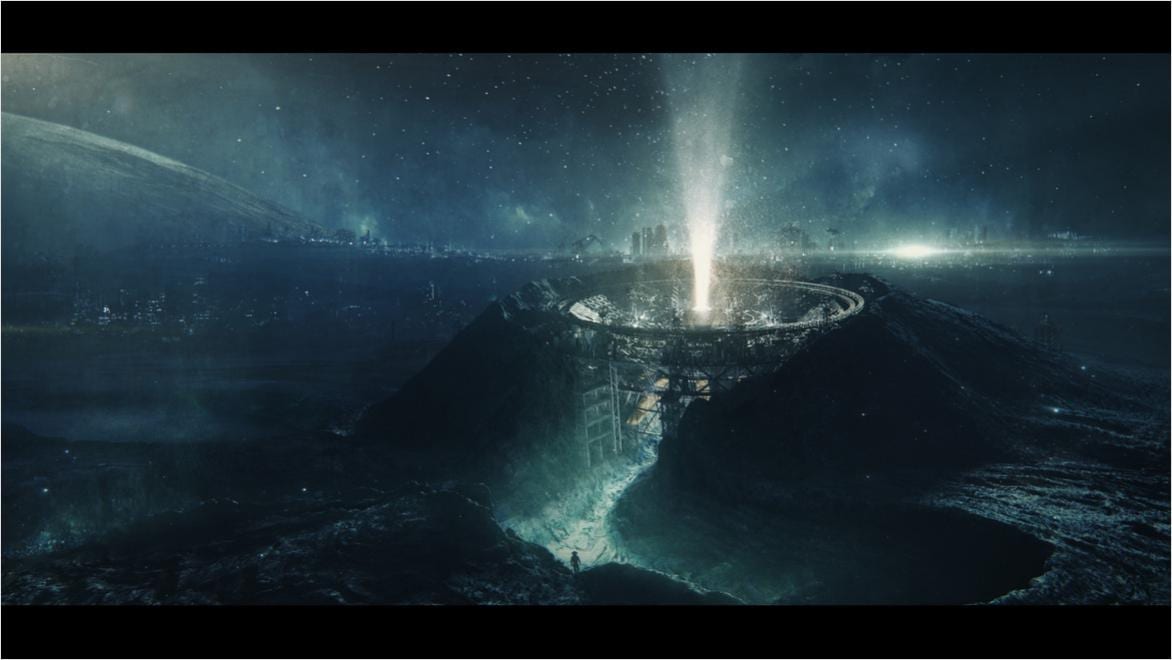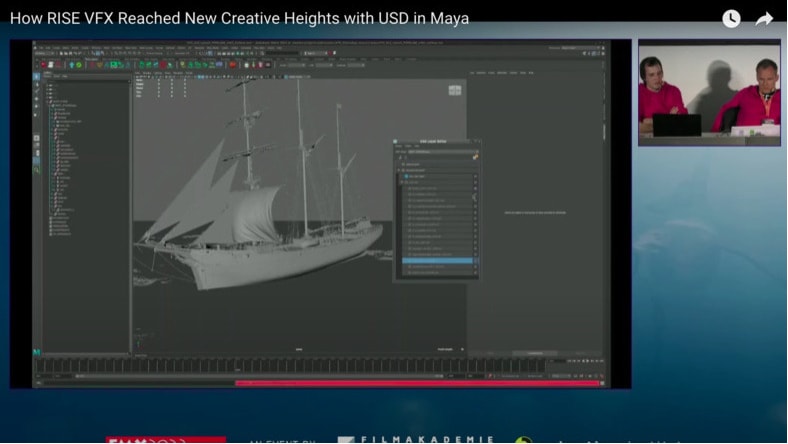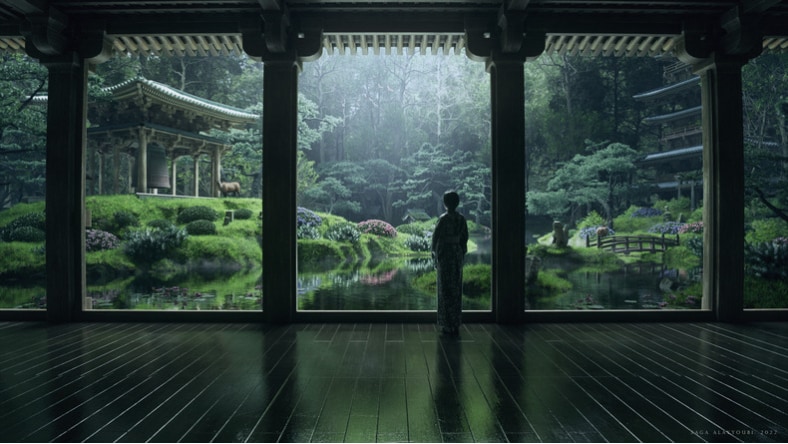& Construction

Integrated BIM tools, including Revit, AutoCAD, and Civil 3D
& Manufacturing

Professional CAD/CAM tools built on Inventor and AutoCAD
Universal Scene Description is a software platform that lets users combine digital assets like shading, lighting, geometry, and more collaboratively, image courtesy of Tim Burroughs
Universal Scene Description, now known as OpenUSD, is the most robust open-source software for data interchange within 3D scenes. This highly collaborative system can contain many different asset sources and is becoming the standard for 3D visual media production, architecture, design, manufacturing, and other industries.
USD helps animators, architects, and CAD operators compose, describe, and collaborate on 3D projects, image courtesy of Oswin Wan
Animation, visual effects (VFX), and game studios have struggled for decades with poor interoperability among various tools in their production pipelines. It was painful to move data from one place to another, so studios built elaborate pipelines to manage data interoperability, often including custom-made tools.
Even Pixar experienced problems with the interchange of data between different applications. After Pixar’s 2012 movie Brave, the studio decided that its scene descriptions had become so complex that it needed a real solution. That year, Pixar invented Universal Scene Description (USD) to deal with the overwhelming complexity of too many different APIs and file formats within the 3D visualization pipeline. In 2016, Pixar released USD as open-source code so it could become a standard for the VFX and animation industries. Pixar realized that all studios had the same problem with complexity management, and by making USD open source, it would be an extensible format that other parties could improve, sharing the benefits with everyone.
OpenUSD solves several workflow and complexity challenges for creating 3D scenes. As an open-source standard, it provides an extensible common language that’s interoperable between compatible software tools and platforms. Its system of layered data also allows nondestructive editing, facilitating easy collaboration. For example, multiple artists can work on the same asset at the same time using USD’s versioning features to merge everyone’s work. USD can also provide fast access to enormous data sets, which enables real-time playback and the ability to edit complex scenes interactively.
Autodesk Maya's USD plug-in is an open-source project
The Alliance for OpenUSD (AOUSD), formed in 2023 by Pixar, Apple, Adobe, Autodesk, NVIDIA, in conjunction with the Joint Development Foundation, fosters the continued development, evolution, and standardization of OpenUSD to make large-scale 3D projects more manageable, efficient, and creatively ambitious.
As more organizations work to advance OpenUSD, everyone who uses the standard can take advantage of the collective progress. For example, Autodesk Maya’s USD plug-in is based on the open-source plug-ins that both Pixar and Animal Logic originally wrote to use USD with Maya. And in turn, Autodesk has also made its Maya USD plug-in an open-source project. In recent years, Autodesk has integrated USD workflows into more content creation tools, including 3ds Max, Arnold, and Bifrost in Maya.
Exchange 3D scene data between different software and tools seamlessly with USD’s common language and file format, designed for interoperability.
The OpenUSD ecosystem is as extensible as the 3D worlds animators create with it. APIs can modify the framework’s simulation, rendering, collaboration, editing, composing, and other functions.
The layering system within USD allows nondestructive data editing, which makes collaborating between different artists and studios more rewarding and less risky.
The Alliance for OpenUSD brings together top industry partners Pixar, Adobe, Apple, NVIDIA, and Autodesk. Many other leading companies are joining to make OpenUSD the industry standard.
Universal Scene Description’s asset resolver is file-system agnostic. It helps organize, manage, and quickly access digital assets regardless of the data storage model or data sources used.
USD’s Hydra rendering architecture provides visualization flexibility by working with custom-made and third-party renderer plug-ins, which several vendors have written.
Scale your studio’s rendering and simulation capabilities, while equipping artists with powerful modeling and animation tools
PIXAR
Peek behind the curtain to see Pixar’s USD pipeline for some of its most complex movies yet, such as Toy Story 4, Coco, and others.
Image courtesy of Pixar
RISE VFX
The renowned studio behind several Marvel properties greatly improved its workflow by becoming an early adopter of Universal Scene Description for its Autodesk Maya asset building and animation pipeline.
EPIC GAMES
Hear experts from Epic Games, the company behind Unreal Engine and Fortnite, discuss how game studios can learn from the VFX industry and incorporate Universal Scene Description into the game asset pipeline.
Image courtesy of Saga Alayyoubi
Get the details on AOUSD, the alliance of Adobe, Apple, Autodesk, NVIDIA, and Pixar to promote USD’s standardization, development, and evolution.
Create a USD model, edit a USD layer, save USD data, and more as part of USD’s integration with Autodesk Maya.
Hear from chief members of the AOUSD about how USD began and its future of promoting interoperability across 3D ecosystems.
Use USD across Maya’s toolset to store, edit, and export complex asset data like modeling, materials, lighting, and shading variations in a single USD container.
Learn about new USD workflows and other streamlining abilities added to Maya, 3ds Max, Bifrost, and Arnold to enhance creativity, collaboration, and efficiency.
USD organizes a 3D scene into a hierarchy of prims (objects/elements), which have attributes (properties/characteristics) associated with them. USD also uses multiple layers of scene data, each layer with its own prims; attributes; and overrides, which modify specific prims and attributes without altering their original data. Variants and variant sets allow for multiple representations of the same object or scene.
The textual USD Stage Description (USD Stage) language describes scene hierarchy and properties in plain text files.
Overall, USD is an efficient way to edit and collaborate on 3D scene data across different production pipelines and has become standardized with native support within leading software.
There are many advantages to Universal Scene Description (USD) for managing 3D scene data. First is interoperability; USD was made to exchange 3D scene data between different software and platforms using a common language and file format.
USD’s layering system sets up two big advantages: nondestructive editing, which makes it easier for artists to experiment with and modify scene data without risk, and scalability, where artists can work on separate scene layers and efficiently manage complex scenes without duplicating tons of data.
Other USD advantages include versioning and collaboration features, performance and efficiency, flexibility, and wide industry support.





